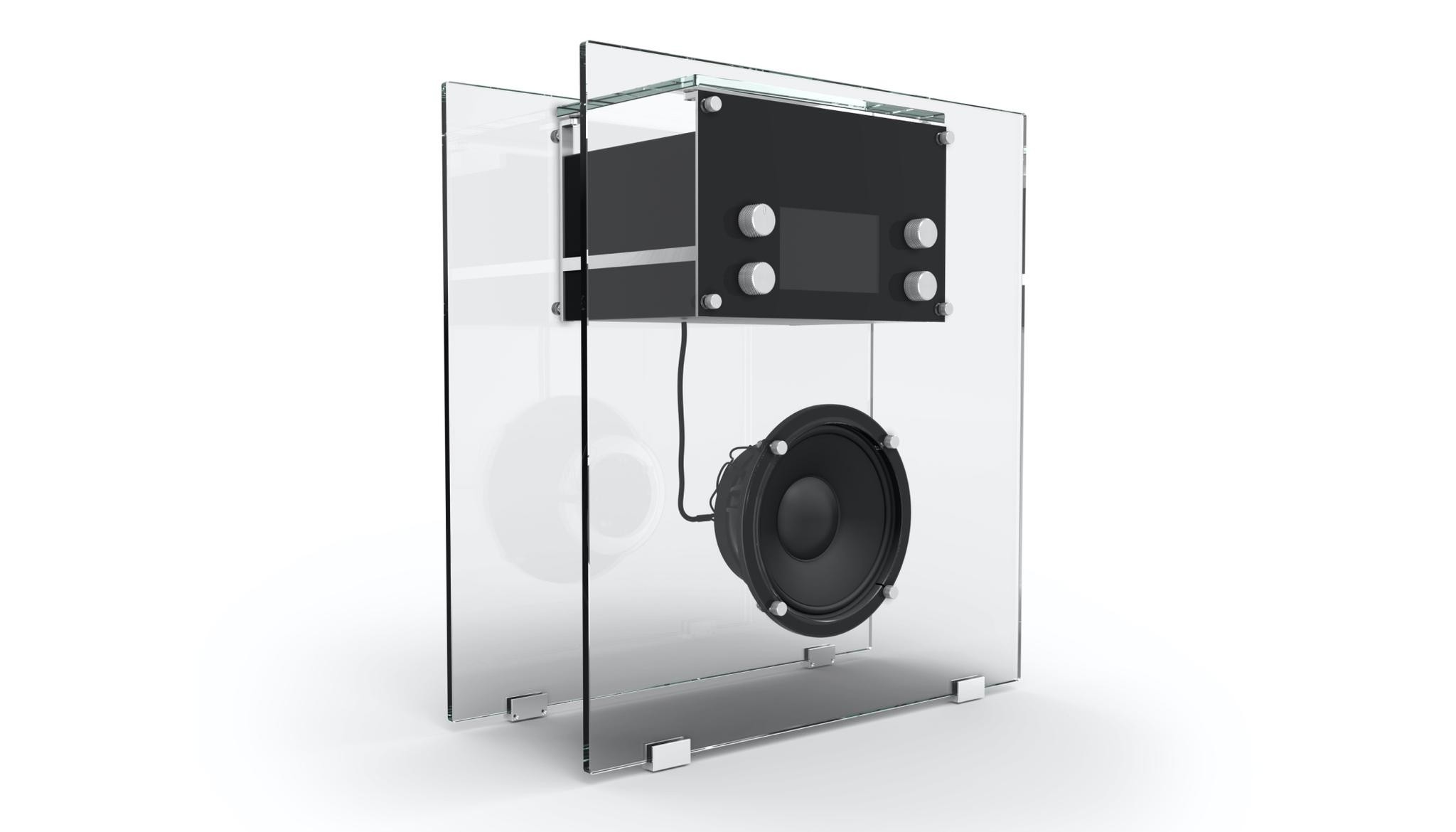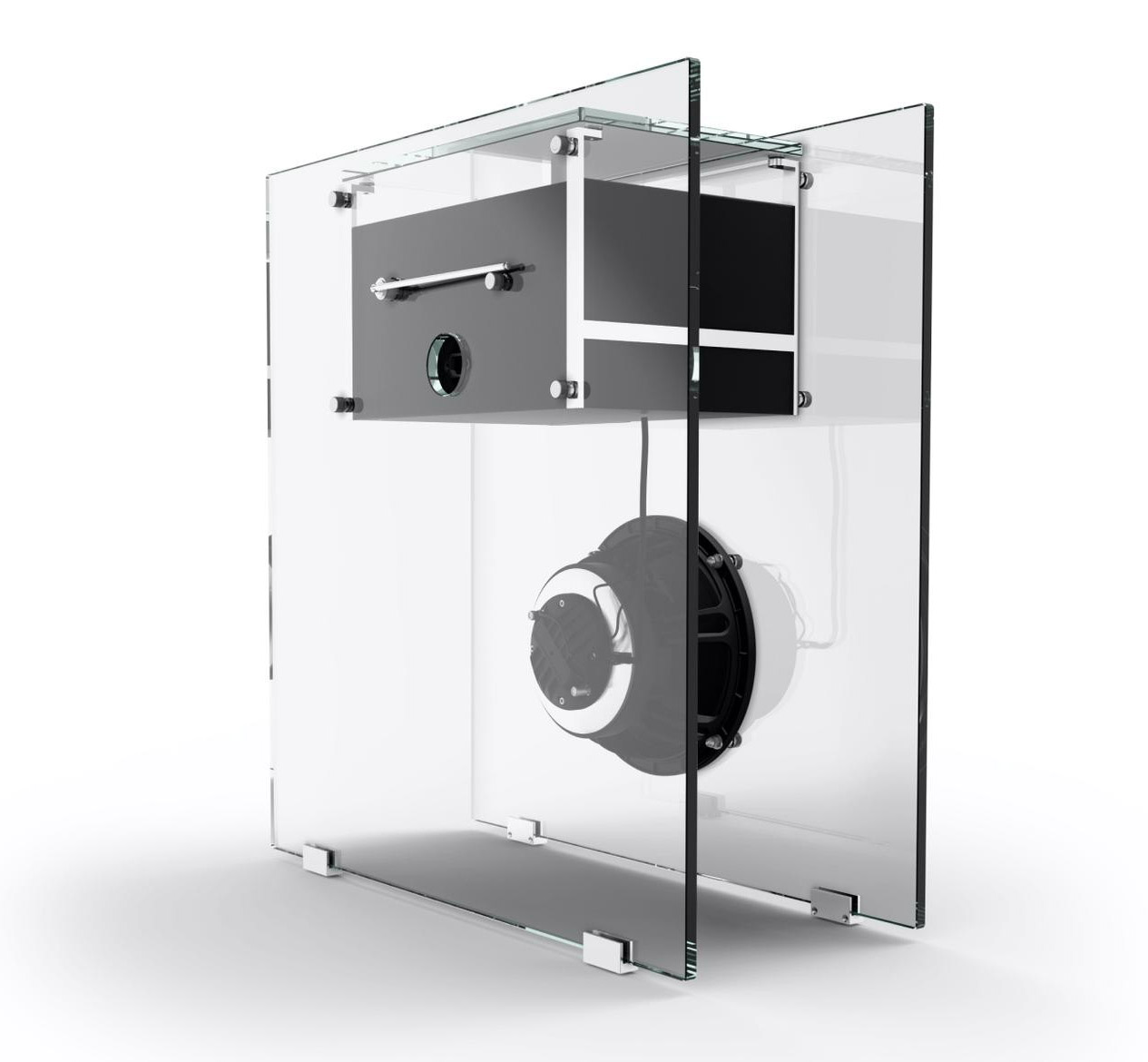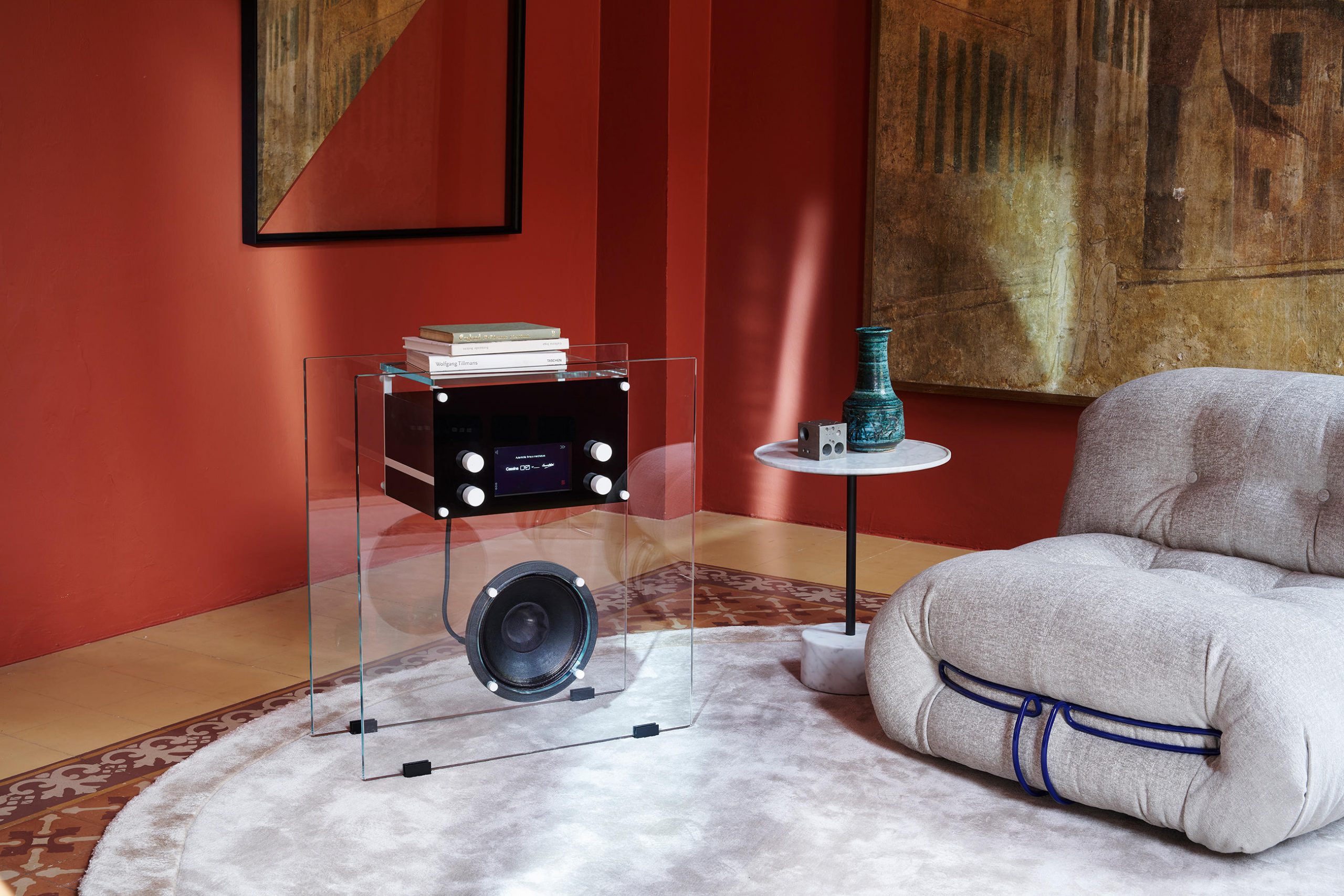CASSINA
Crystal radio by Franco Albini


This radio is a call to innovation, revolutionary for the times in which it was created, and always loved for its great evocative capacity.
A unique aesthetic with equally innovative electronics. Essential in lines and materials, it has a structure formed by two sheets of extra-tempered glass and a body in matt black lacquered MDF, and by the electronic component.
This radio was originally conceived by Franco Albini as a prototype model for his home in 1938. The idea was born when the architect received a traditional wooden radio cabinet as a wedding gift. Given its embalmed and clumsy appearance, he decided to disassemble and then reassemble it, to see only the essential electrical components. The goal was to show only what he believed was actually needed, that is, all the technical-functional components, consequently removing the excess material and breaking down the device to enhance its true essence.
Technical specifications
- Valve preamplification (old fashion style)
- 50W audio power (100W total with optional subwoofer)
- Class D power amplifier
- Frequency 42/19000Hz (with optional subwoofer)
- 7″ color display
- FM radio
- DAB Radio
- Bluetooth audio A2DP

The excellent sound performance of the radio can be further enhanced through a 50W Wireless Subwoofer (optional) which, thanks to the low-frequency transmission, creates an even more immersive experience. As a sign of authenticity, each copy bears the logo and signature of Franco Albini, in addition to the progressive numbering that acts as the identity card that accompanies each piece of the Cassina “I Maestri” Collection.
Limited edition, triumph of Made in Italy
This design object, unique in its kind, also comes in a very special, 5-pieces only limited edition: for each of these, we have hand-welded each circuit of the electronic board, a cult object for connoisseurs that translates into a unique quality in the transmission of sound. Each piece is numbered with a metal plate on the side of the structure and differs visually for the white knobs.


